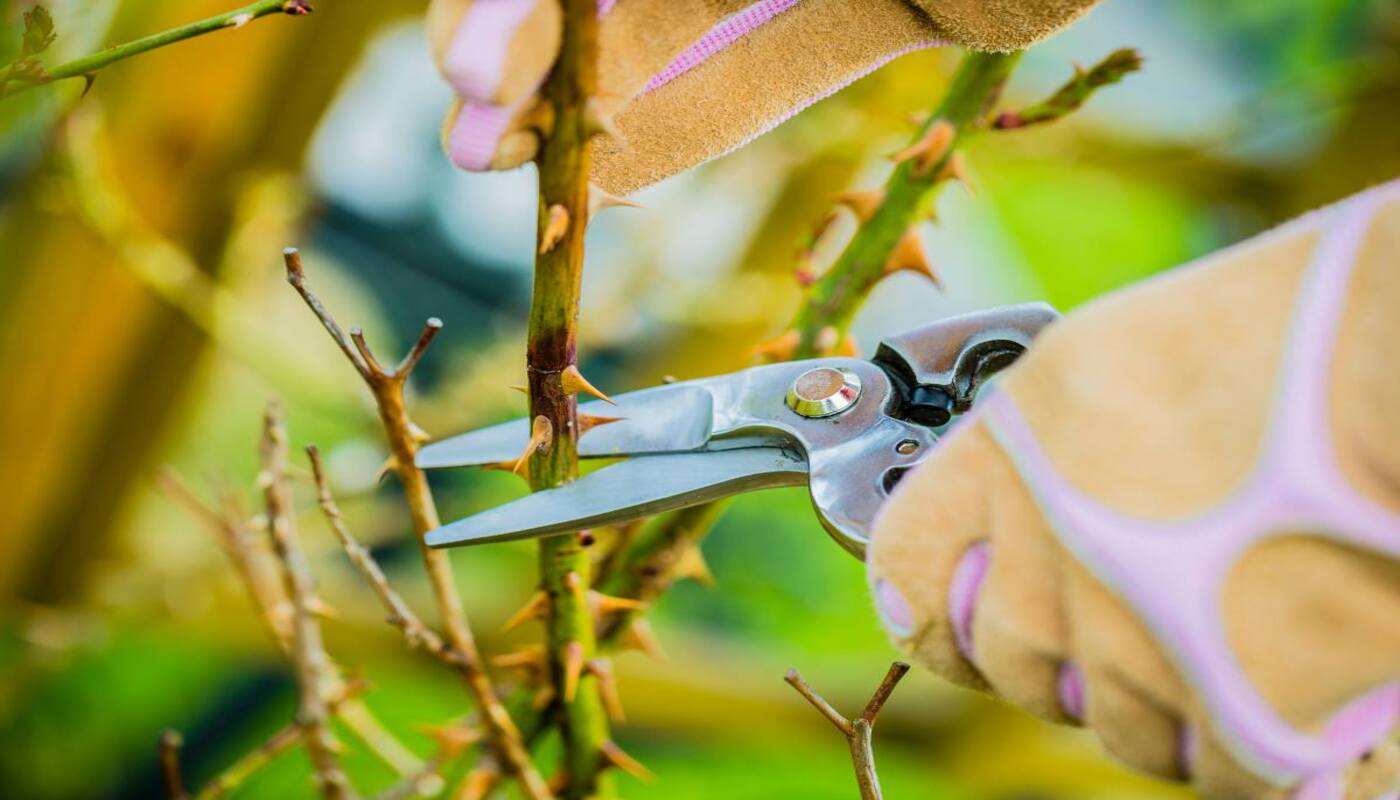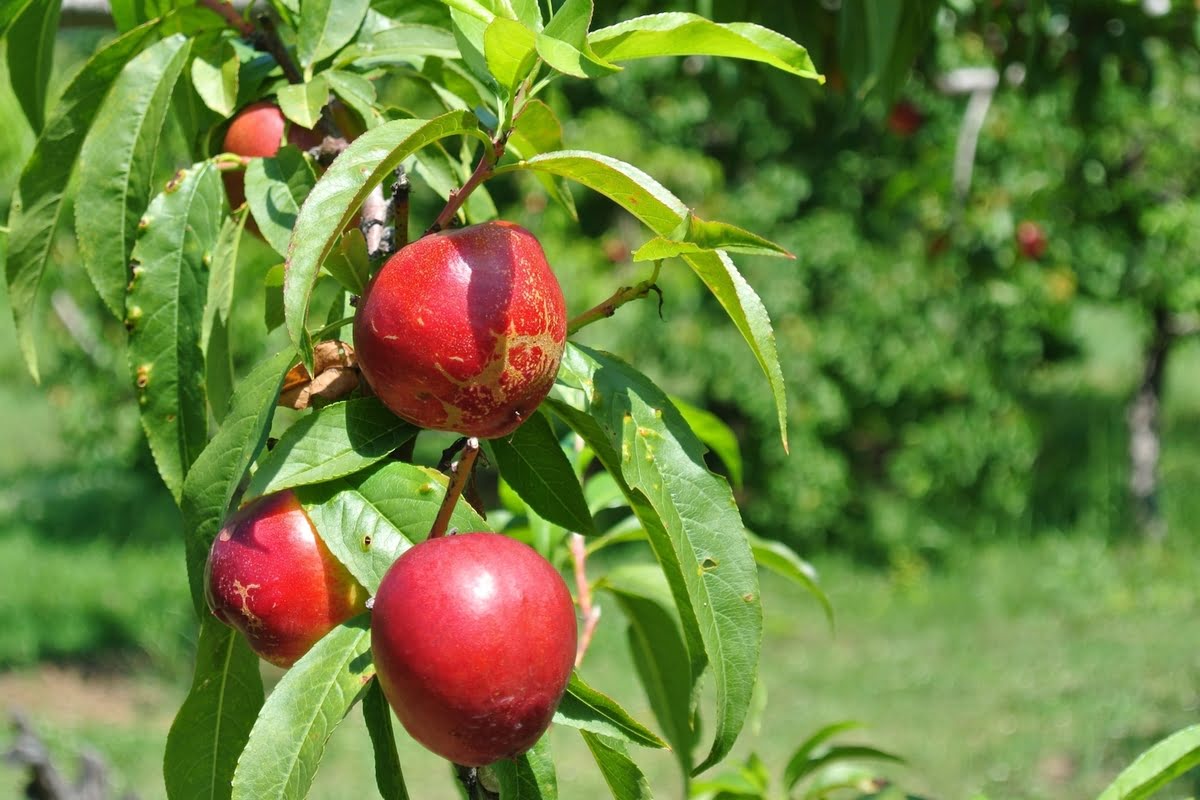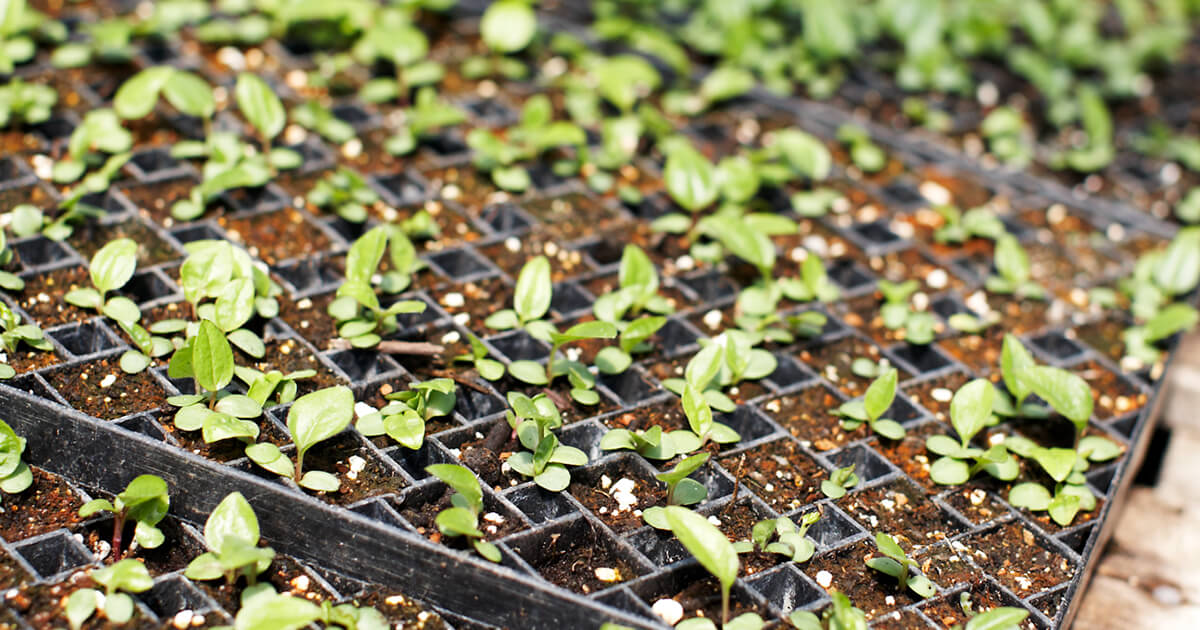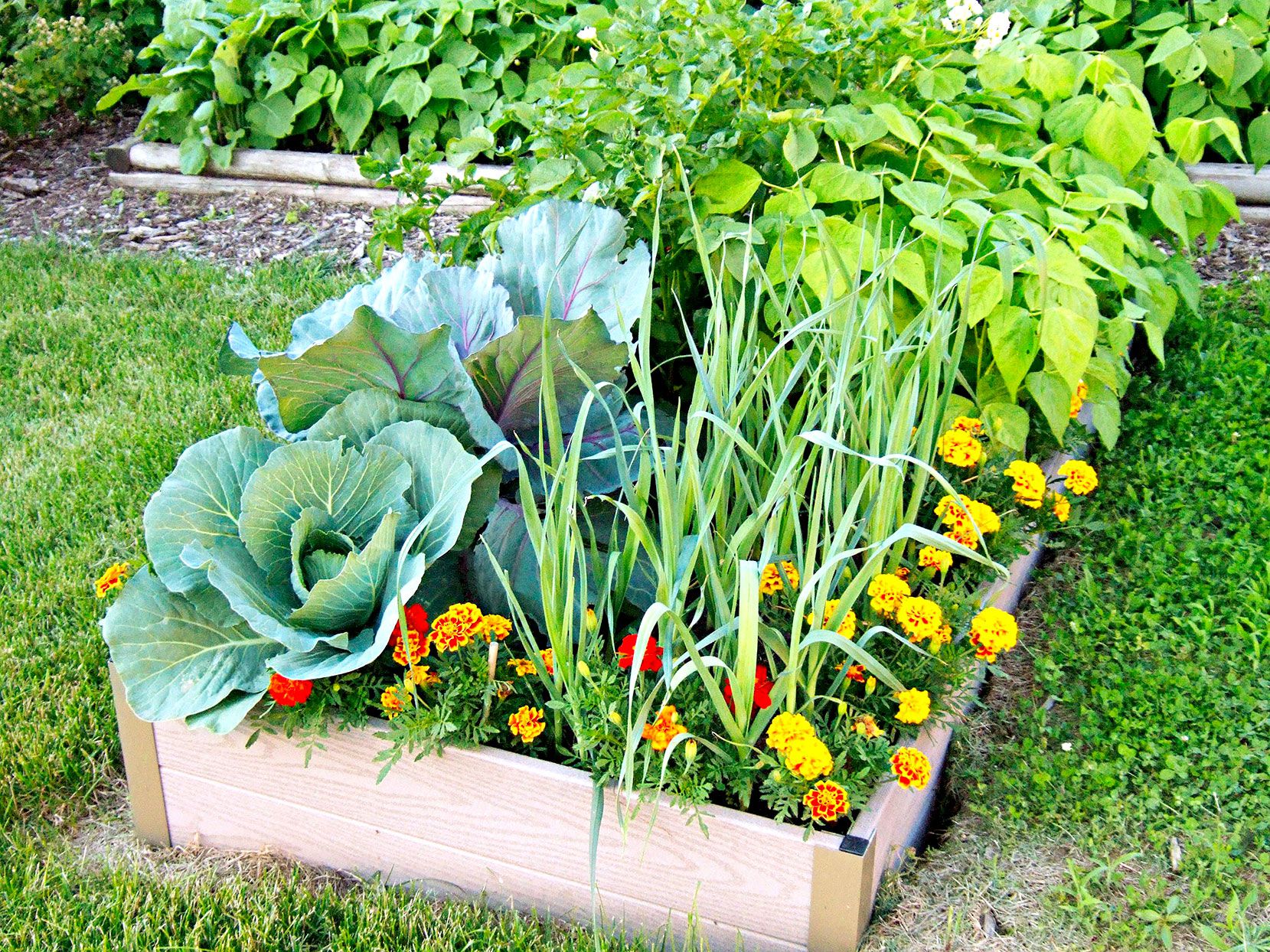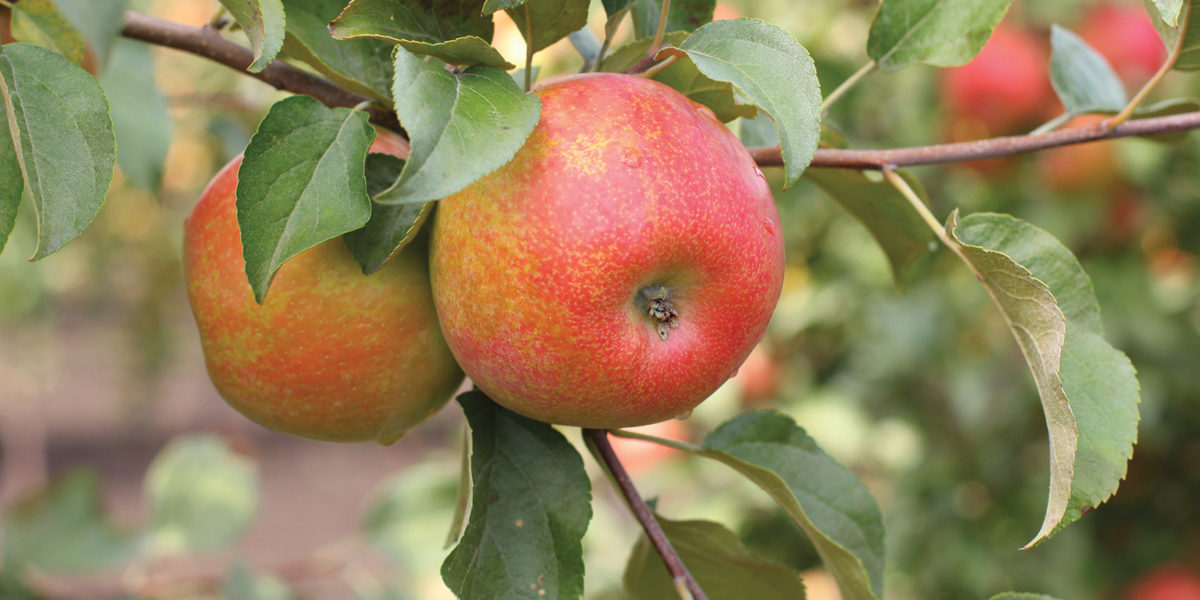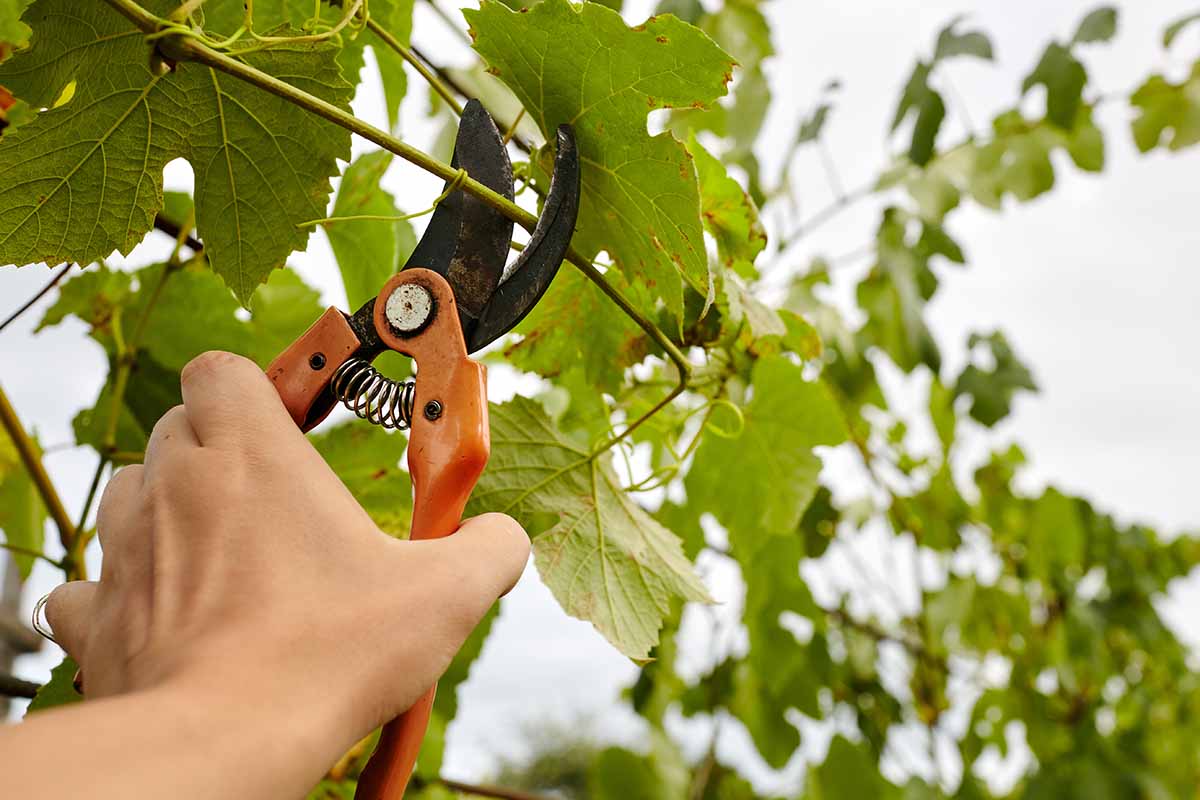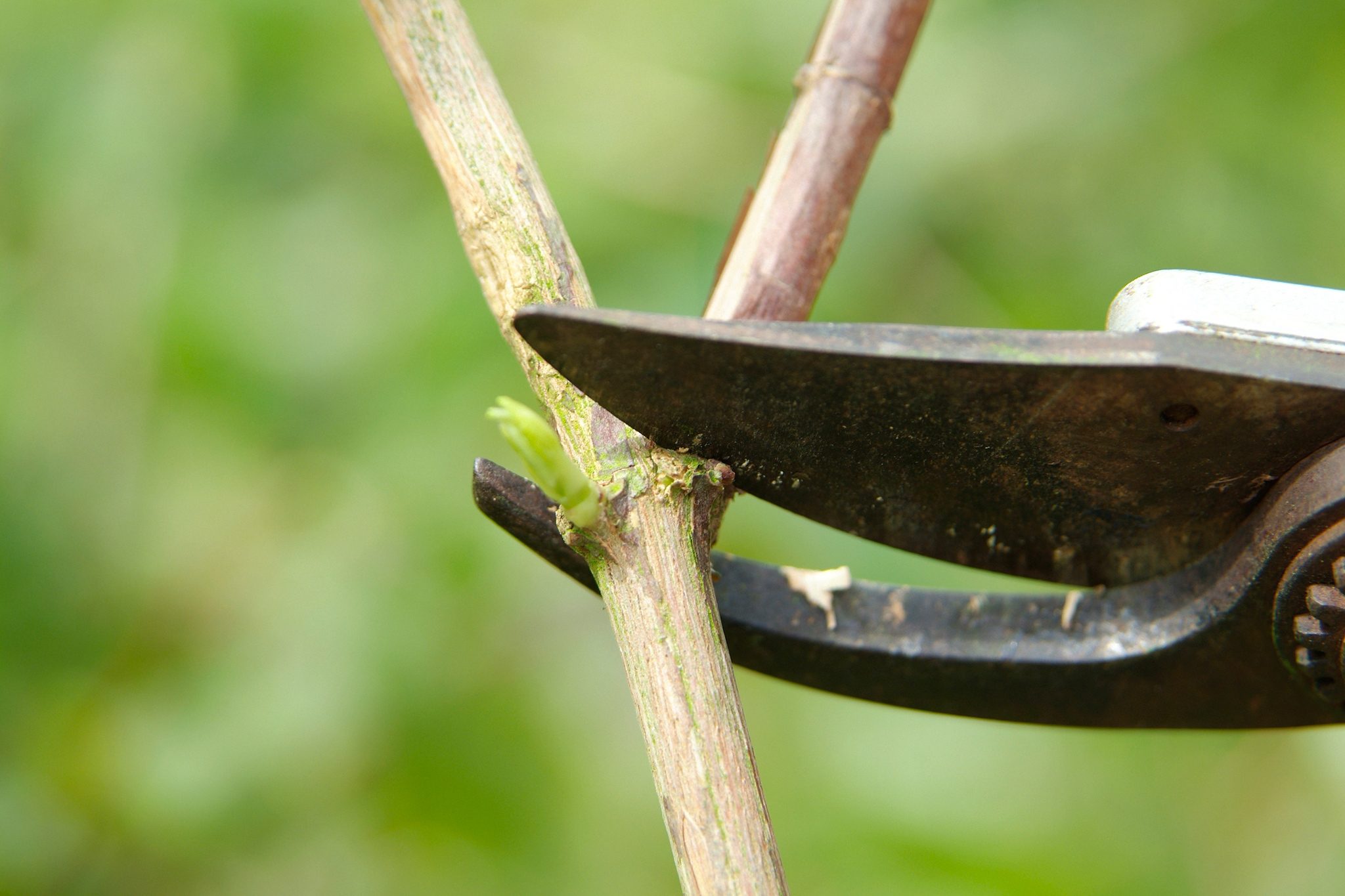Home>Gardening Techniques>Seasonal Gardening>When To Start Pruning Bonsai
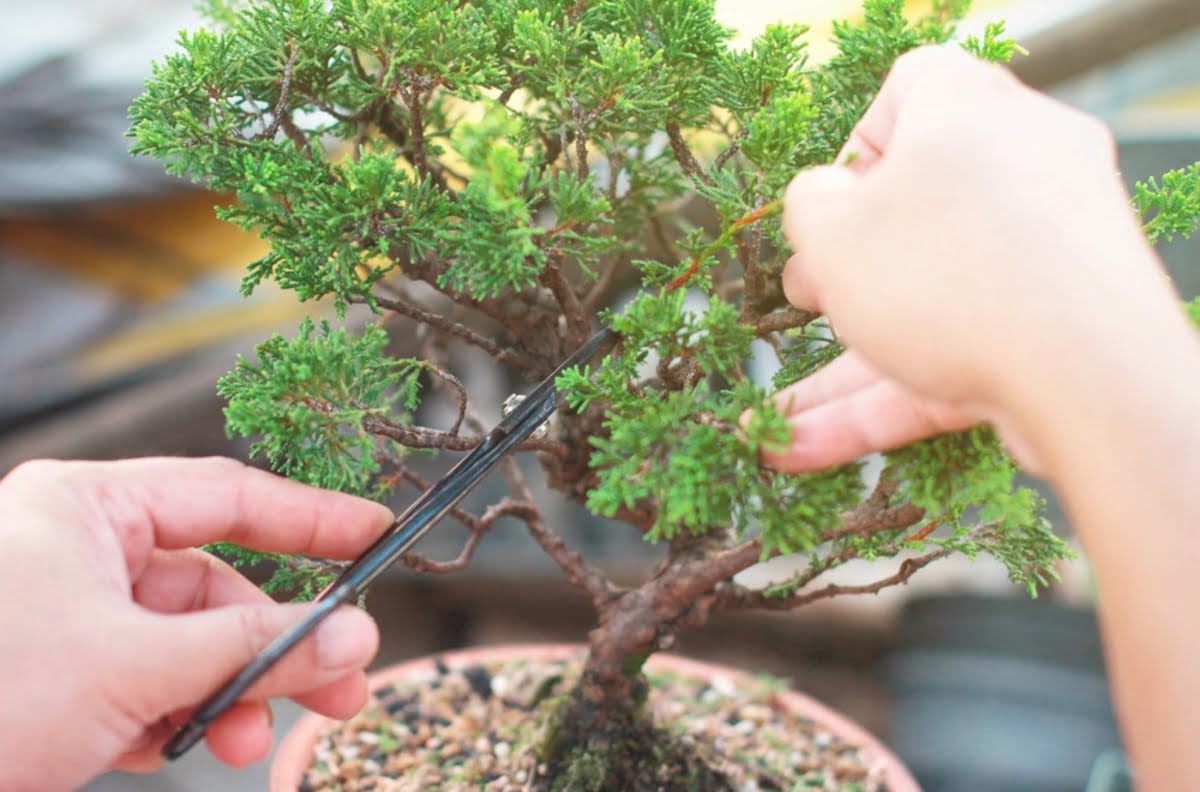

Seasonal Gardening
When To Start Pruning Bonsai
Modified: January 22, 2024
Learn when to start pruning bonsai and optimize your seasonal gardening. Enhance the growth and beauty of your bonsai with expert pruning techniques.
(Many of the links in this article redirect to a specific reviewed product. Your purchase of these products through affiliate links helps to generate commission for Chicagolandgardening.com, at no extra cost. Learn more)
Table of Contents
- Introduction
- Understanding Bonsai Pruning
- Factors to Consider Before Pruning
- Signs It’s Time to Prune Your Bonsai
- Best Time of Year for Pruning Bonsai
- Pruning Techniques for Different Bonsai Species
- Pruning Tools and Equipment
- Step-by-Step Guide to Pruning Bonsai
- Common Mistakes to Avoid When Pruning Bonsai
- Conclusion
Introduction
Welcome to the world of bonsai gardening! Bonsai, derived from the Japanese words “bon” meaning tray and “sai” meaning plant, is an ancient art form that involves cultivating miniature trees in small containers. Pruning plays a crucial role in shaping and maintaining the size and aesthetic appeal of bonsai trees.
Pruning a bonsai tree is not as simple as trimming branches or cutting off leaves. It is a meticulous process that requires a deep understanding of the tree’s growth patterns and needs. Proper pruning techniques help develop a balanced structure, enhance branch density, and encourage new growth.
Knowing when to prune your bonsai tree is essential for its overall health and vitality. Pruning at the right time can stimulate growth, control the tree’s size, and maintain its desired shape. However, pruning at the wrong time can weaken the tree and even lead to its decline.
In this article, we will explore the factors to consider before pruning, the signs that indicate it’s time to prune your bonsai, the best time of year for pruning, and the various pruning techniques specific to different bonsai tree species. We will also discuss the essential tools and equipment needed for pruning bonsai and provide you with a step-by-step guide to help you navigate the pruning process with confidence.
Whether you are a seasoned bonsai enthusiast or just starting out on your bonsai journey, this article will serve as your comprehensive guide to understanding the art of pruning bonsai trees. So, grab your pruning shears and join us as we delve into the fascinating world of bonsai pruning!
Understanding Bonsai Pruning
Pruning is an essential practice in bonsai cultivation, as it helps shape and maintain the miniature size and aesthetic appeal of the tree. But before we delve into the specifics of pruning techniques, it’s important to understand the principles behind bonsai pruning.
At its core, bonsai pruning serves several purposes. First and foremost, it allows us to control the tree’s growth and shape. By selectively removing branches and foliage, we can guide the tree’s development and create a desired form. Pruning also helps improve branch density, creating a more balanced and visually pleasing silhouette.
Furthermore, pruning plays a vital role in maintaining the tree’s overall health. By removing dead, diseased, or damaged branches, we can prevent potential infections from spreading and promote the growth of new, healthy foliage. Pruning also encourages air circulation and light penetration to the inner branches, reducing the risk of pest and disease infestations.
It’s important to note that bonsai pruning is not solely about cutting away branches. The process involves careful consideration of the tree’s growth patterns and natural form. The goal is to create a semblance of a mature, full-sized tree, capturing its essence in miniature form.
There are two main types of pruning techniques in bonsai: maintenance pruning and structural pruning. Maintenance pruning focuses on the regular removal of excess foliage and branches to maintain the tree’s shape and size. This type of pruning is typically done throughout the year as needed.
On the other hand, structural pruning involves more significant cuts and is typically done during the tree’s dormancy period. This type of pruning helps shape the tree’s overall structure by removing larger branches and redirecting growth to achieve the desired form.
To ensure successful bonsai pruning, it’s crucial to learn about the specific needs and growth habits of your bonsai tree species. Different species have varying tolerance for pruning and may require specific techniques for optimal results. Understanding your tree’s specific requirements will help you make informed decisions when it comes to pruning.
In the next section, we will discuss the factors to consider before pruning your bonsai tree to ensure its health and vigor. So, let’s jump right in!
Factors to Consider Before Pruning
Before diving into the pruning process, there are several factors you should take into consideration to ensure the health and well-being of your bonsai tree. Understanding these factors will help you make informed decisions and achieve the best results from your pruning efforts.
1. Bonsai Species: Different bonsai tree species have different growth habits, tolerance for pruning, and specific requirements. It’s crucial to research and understand the specific needs of your bonsai tree species before pruning. Some species may require more frequent pruning, while others may have specific timing requirements.
2. Season: The time of year plays a vital role in determining when to prune your bonsai tree. Most bonsai trees are best pruned during their dormant period, which is typically in late winter or early spring. Pruning during this time promotes new growth and helps shape the tree for the upcoming growing season.
3. Health of the Tree: It’s important to assess the overall health of your bonsai tree before pruning. If the tree is weakened, stressed, or already struggling with any diseases or pests, it’s best to postpone pruning until the tree has recovered. Pruning when the tree is in good health will ensure optimal results and minimize any potential stress on the tree.
4. Desired Style: Consider the desired style and shape of your bonsai tree before pruning. Different pruning techniques and cuts can help you achieve specific styles, such as informal upright, cascade, or windswept. Planning ahead and visualizing your desired outcome will guide your pruning decisions.
5. Time and Patience: Bonsai pruning is a meticulous process that requires time, patience, and attention to detail. Rushing through the pruning process or over-pruning can have negative consequences for the tree’s health and overall appearance. Take your time, step back, and evaluate your tree throughout the pruning process.
6. Tools and Techniques: Ensure you have the necessary tools and equipment for pruning, such as sharp pruning shears, wire cutters, and concave cutters. Additionally, familiarize yourself with the various pruning techniques specific to your bonsai tree species. Using the correct tools and techniques will help you achieve clean cuts and minimize stress on the tree.
By considering these factors carefully, you will be well-prepared to embark on your bonsai pruning journey. In the next section, we will explore the telltale signs that indicate it’s time to prune your bonsai tree. So, let’s continue our bonsai pruning adventure!
Signs It’s Time to Prune Your Bonsai
Pruning your bonsai tree at the right time is crucial for its overall health and appearance. But how do you know when it’s time to pick up those pruning shears? Here are some telltale signs that indicate it’s time to prune your bonsai:
1. Overgrown Branches: If you notice branches extending beyond the desired shape or size of your bonsai tree, it may be time to prune. Overgrown branches can affect the tree’s overall balance and aesthetic appeal.
2. Disproportionate Foliage: When certain areas of your bonsai tree have an excessive amount of foliage, it can create an unbalanced look. Pruning can help redistribute foliage and create a more harmonious appearance.
3. Crossing or Rubbing Branches: As branches grow, they may cross or rub against each other, causing damage or hindering healthy growth. Carefully prune rubbing branches to prevent further issues.
4. Weak or Dead Branches: It’s essential to remove any weak or dead branches from your bonsai tree. Pruning these branches will promote new growth and prevent the spread of diseases or pests.
5. Densely Packed Foliage: When foliage becomes too dense, it can limit airflow and sunlight penetration, leading to potential health issues. Thinning out excessive foliage through pruning will help improve overall tree health.
6. Unwanted Suckers or Water Sprouts: Suckers and water sprouts are vigorous shoots that grow rapidly and detract from the desired shape of your bonsai tree. Remove these unwanted growths to maintain the desired form.
Remember, the specific timing for pruning your bonsai tree may vary depending on the species and its specific needs. It’s generally recommended to prune deciduous trees during their dormant period, and evergreen trees can be pruned year-round.
Observing these signs and keeping a close eye on your bonsai tree’s growth will help you determine when it’s the right time to prune. In the next section, we will discuss the best time of year for pruning your bonsai tree. So, let’s continue our bonsai pruning journey!
Best Time of Year for Pruning Bonsai
Timing is crucial when it comes to pruning your bonsai tree. Pruning at the right time of year ensures the best results in terms of growth, health, and aesthetics. The timing may vary depending on the type of bonsai tree you have, so let’s explore the general guidelines for the best time to prune:
1. Deciduous Bonsai Trees: Deciduous trees, such as maple, elm, or cherry, should be pruned during their dormant period, which is typically in late winter or early spring, before the buds start to swell. Pruning during this time promotes new growth and helps shape the tree for the growing season ahead.
2. Evergreen Bonsai Trees: Evergreen trees, like pine, juniper, or spruce, can be pruned throughout the year, but it’s generally advisable to prune during the late winter or early spring, just before the new growth begins. Light pruning can be done year-round to maintain the desired shape.
3. Flowering Bonsai Trees: Flowering bonsai trees, such as azaleas or cherry blossoms, have their own specific pruning needs. Pruning should be done immediately after flowering to shape the tree and encourage the development of flower buds for the following year.
4. Fruiting Bonsai Trees: For fruit-bearing bonsai trees, such as citrus or apple trees, pruning should be done during the dormant period, similar to deciduous trees. However, it’s essential to be cautious with the timing, as pruning too late in the dormant season can reduce the tree’s fruiting potential.
It’s important to note that these are general guidelines, and the specific timing for pruning may vary depending on your location and the specific species of your bonsai tree. Researching the pruning requirements for your particular tree species will provide you with more specific guidelines.
Additionally, it’s crucial to assess the health and vigor of your bonsai tree before pruning. If the tree is weak or already stressed, it may be best to wait until it has recovered before engaging in any significant pruning activities.
By pruning your bonsai tree at the optimal time of year, you can ensure optimal growth, maintain its health, and achieve the desired shape and style. In the next section, we will dive into the different pruning techniques suitable for various bonsai tree species. So, let’s learn how to prune like a pro!
Pruning Techniques for Different Bonsai Species
Pruning techniques may vary depending on the species of bonsai tree you have. Each species has its unique growth patterns and requirements, and understanding the specific pruning techniques for your bonsai tree will help you achieve the best results. Let’s explore some commonly used pruning techniques:
1. Pinching: Pinching involves removing the tips of new growth with your fingers or shears. This technique is commonly used for deciduous and evergreen trees to encourage back budding and create denser foliage. It helps maintain the overall shape and size of the tree.
2. Thinning: Thinning involves selectively removing interior branches or excess foliage to improve airflow and allow light to penetrate the inner parts of the bonsai tree. Thinning helps prevent the development of weak or leggy growth and encourages the growth of healthier branches.
3. Heading Back: Heading back involves cutting back the tips of branches, usually to a lateral bud. This technique stimulates the growth of new branches and directs the tree’s growth in a particular direction. Heading back is often used to balance the overall structure of the bonsai tree.
4. Pruning for Shape: To achieve a desired shape or style, such as an informal upright or cascade, specific pruning techniques are utilized. This may involve removing certain branches or encouraging the growth of others in a particular direction. Pruning for shape requires precision and careful consideration of the overall design.
5. Root Pruning: Root pruning is an essential technique in bonsai cultivation. It involves carefully removing and trimming the roots to maintain a compact root system that fits within the bonsai container. Root pruning is typically done during repotting and helps promote new root growth and overall tree health.
It’s important to note that pruning should be done gradually and in stages, especially for more significant cuts. Rushing the pruning process can result in stress to the tree, affecting its health and vitality. Take your time, observe the tree’s response, and adjust your pruning techniques accordingly.
Remember to always use clean and sharp pruning tools to make precise and clean cuts. After pruning, it’s essential to care for the tree appropriately, providing it with proper watering, nutrition, and light conditions to support its recovery and encourage new growth.
Each tree species may have its specific requirements and preferences when it comes to pruning techniques. Consider researching and consulting bonsai experts or specialized literature to gain a deeper understanding of the specific pruning techniques for your bonsai tree species.
In the next section, we will discuss the essential tools and equipment you need for successful bonsai pruning. So, let’s dive into the world of bonsai pruning tools!
Pruning Tools and Equipment
Having the right tools and equipment is crucial for successful bonsai pruning. The proper tools not only ensure clean and precise cuts but also make the pruning process more efficient and enjoyable. Here are some essential pruning tools and equipment you should have in your bonsai toolkit:
1. Pruning Shears: Pruning shears, also known as bonsai scissors or secateurs, are a must-have tool for bonsai pruning. They have sharp blades and a sturdy construction, allowing you to make clean cuts on branches and foliage with ease. Choose a high-quality pair that feels comfortable in your hand.
2. Knob Cutters: Knob cutters are specialized bonsai tools designed for removing larger branches or stubs. They have concave jaws that leave a smooth, rounded cut, minimizing scarring and promoting faster healing. Knob cutters are particularly useful for structural pruning and creating natural-looking branch contours.
3. Wire Cutters: Wire cutters are essential for bonsai styling and shaping. They are used to safely cut and remove wire without damaging the tree or injuring yourself. Look for wire cutters with sharp cutting edges and a comfortable grip.
4. Root Pruning Tools: Root pruning is a crucial part of bonsai care. Root pruning tools, such as root hooks or root shears, are specifically designed for safely and effectively trimming the roots of your bonsai tree during repotting. These tools help maintain a healthy root system and promote proper drainage.
5. Jin Pliers: Jin pliers are used for creating deadwood features in bonsai, such as hollowed-out areas or exposed bark. They have serrated, v-shaped jaws that enable you to strip away bark or shape deadwood branches. Jin pliers are handy for adding character and age to your bonsai tree.
6. Branch Benders: Branch benders are tools used to gently bend branches into desired positions. They are typically made of metal and come in various sizes and shapes to accommodate different branch thicknesses. Branch benders allow you to shape and style your bonsai tree with precision.
7. Pruning Sealant: Pruning sealant is a protective substance applied to cut branches or wounds to promote healing and prevent infections. It comes in liquid or paste form and helps create a barrier against pests and diseases. Pruning sealant is particularly beneficial for larger cuts or exposed areas on your bonsai.
Remember to clean and maintain your tools regularly. Keep them sharp and free from dirt and debris to ensure optimal performance and longevity.
Investing in the right tools and equipment will not only make your bonsai pruning tasks more efficient but also contribute to the overall well-being and appearance of your trees. In the next section, we will provide a step-by-step guide to pruning your bonsai tree. So, let’s get ready to prune!
Step-by-Step Guide to Pruning Bonsai
Pruning your bonsai tree is a meticulous process that requires careful planning and execution. Follow these step-by-step guidelines to achieve successful pruning results:
1. Assess the Tree: Begin by observing your bonsai tree and identifying the areas that need pruning. Look for overgrown branches, crossing branches, weak or dead branches, and any areas that need shaping to achieve your desired bonsai style.
2. Prepare Tools and Materials: Ensure that you have all the necessary pruning tools and equipment cleaned and readily available. Also, have a pruning sealant handy to apply to larger cuts if needed.
3. Start with Maintenance Pruning: Begin the pruning process by focusing on maintenance pruning. This involves the selective removal of excess foliage and small branches to maintain the shape and size of the tree. Make clean cuts at a slight angle just above a bud or branch collar.
4. Address Structural Pruning: If your bonsai tree requires significant structural changes, proceed with structural pruning. This may involve removing larger branches or redirecting growth to achieve the desired shape. Use appropriate tools like knob cutters for larger cuts and branches.
5. Consider Branch Placement: When pruning, pay attention to branch placement to create a balanced and natural-looking canopy. Aim for an open structure that allows air and light to penetrate the inner branches, promoting overall tree health.
6. Remove Weak or Dead Branches: Take the opportunity to remove any weak or dead branches. This helps improve the tree’s health and prevents the spread of diseases or pests. Make clean cuts close to the main branch or trunk.
7. Step Back and Evaluate: Throughout the pruning process, step back to assess your progress and the overall look of the tree. Make adjustments as needed and ensure that the tree maintains its desired shape and style.
8. Clean Up and Apply Pruning Sealant: Remove any fallen debris or foliage from the tree and the surrounding area. If you have made any larger cuts, consider applying a pruning sealant to the exposed areas to promote healing and protect against infections.
9. Maintain Proper Aftercare: After pruning, provide your bonsai tree with appropriate aftercare. This includes proper watering, fertilization, and ensuring it receives adequate sunlight. Monitor the tree closely to observe its response and adjust your care as needed.
Remember, pruning is an ongoing process, and it may take multiple pruning sessions to achieve your desired results. Regular maintenance pruning is necessary to keep your bonsai tree in shape and promote its overall health and growth.
By following this step-by-step guide, you will be able to prune your bonsai tree with confidence and precision. In the next section, we will discuss common mistakes to avoid when pruning bonsai. So let’s continue on our journey to cultivate beautiful bonsai trees!
Common Mistakes to Avoid When Pruning Bonsai
Pruning bonsai trees requires skill, knowledge, and finesse. While it can be an enjoyable and rewarding process, there are common mistakes that beginners and even experienced enthusiasts should be mindful of. By understanding and avoiding these mistakes, you can ensure the health and vitality of your bonsai tree. Let’s explore some of the most common mistakes:
1. Over-Pruning: One of the most prevalent mistakes is over-pruning. It’s important to remember that bonsai trees need foliage to generate energy through photosynthesis. Be cautious not to remove too many branches or foliage, as it can weaken the tree and hinder its growth.
2. Improper Pruning Technique: Using incorrect pruning techniques can lead to undesirable outcomes. Make sure to learn and apply the appropriate techniques for the specific tree species you are cultivating. Improper cuts may cause harm to the tree and result in slow healing or encourage disease and pests.
3. Pruning at the Wrong Time: Timing plays a crucial role in bonsai pruning. Pruning at the wrong time of year, especially during active growth periods, can stress the tree and disrupt its natural cycle. Research the specific requirements of your bonsai tree species to determine the optimal time for pruning.
4. Neglecting the Tree’s Health: Pruning a bonsai tree that is weak, stressed, or already struggling with diseases or pests can further harm the tree. It’s important to address any health issues first, provide the necessary care, and wait for the tree to regain its strength before proceeding with pruning.
5. Poor Branch Placement: Carefully consider the placement of branches during pruning to achieve a balanced and visually appealing canopy. Rushing or not paying attention to branch placement can result in an imbalanced or unnatural-looking tree structure.
6. Using Dull or Incorrect Tools: Using dull or incorrect tools can lead to jagged cuts that take longer to heal and increase the risk of infections. Ensure your pruning tools are sharp, clean, and appropriate for the size and type of branches you are cutting.
7. Lack of Aftercare: Proper aftercare is essential after pruning. Neglecting watering, fertilization, and overall tree care can hinder the recovery process and leave your bonsai tree vulnerable to stress and disease. Maintain consistent care and monitor the tree for any signs of distress.
By being aware of these common mistakes, you can navigate the pruning process with confidence and care. Continuously educate yourself, seek guidance from experienced bonsai enthusiasts, and learn from your own experiences to improve your pruning skills.
In the concluding section, we will summarize the key points discussed in this article and emphasize the importance of proper pruning in maintaining healthy and beautiful bonsai trees.
Conclusion
Bonsai pruning is a vital practice in maintaining the health, shape, and aesthetic appeal of your bonsai tree. By understanding the principles, timing, and techniques of pruning, you can cultivate beautiful and thriving bonsai trees in your garden or home.
In this article, we explored the importance of pruning in bonsai cultivation and discussed various factors to consider before pruning. We learned about the signs that indicate it’s time to prune your bonsai tree and the best time of year to carry out pruning based on the species.
We also delved into essential pruning techniques for different bonsai species, emphasizing the significance of proper tools and equipment. By following a step-by-step guide to pruning and avoiding common mistakes, you can achieve optimal results while promoting the health and growth of your bonsai tree.
Remember, bonsai pruning is an ongoing process that requires patience, observation, and continuous care. Regular maintenance pruning will help maintain the desired size, shape, and balance of your bonsai tree while ensuring its overall health and vitality.
As you embark on your bonsai pruning journey, continue to explore and expand your knowledge of seasonal gardening and the specific needs of different bonsai tree species. Every bonsai tree has its own unique charm and personality, waiting to be shaped and nurtured through the art of pruning.
So pick up your pruning shears, hone your skills, and enjoy the rewarding and therapeutic experience of pruning bonsai trees. Watch as your trees flourish and transform into miniature living masterpieces, showcasing the harmony between nature and human creativity.

